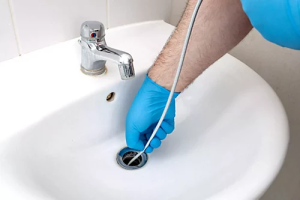Whether you are a homeowner, property manager, distributor, or architect, it’s important to be well informed when choosing the right roofing material for your next project.

Bixby Metal Roof has several significant advantages over shingle types. Here are a few of their key benefits: Durability, Energy Efficiency, Aesthetics, and Maintenance.
A metal roof boasts a long lifespan, significantly outlasting traditional asphalt shingles. This durability reduces the frequency of repairs and replacements, minimizing maintenance costs for the homeowner. It also provides peace of mind for property owners in areas prone to severe weather, such as hurricanes and wildfires. Several factors contribute to the longevity of a metal roof, including the material type, design, and proper installation.
The most common choice of metal roofing is steel or galvanized iron, which have a reputation for lasting 40 to 70 years or more, far beyond the average lifespan of a conventional asphalt shingle roof. Copper and zinc offer even greater longevity, although they are typically reserved for high-end or custom projects due to their higher initial cost.
All metal roofs provide superior resistance to fire, hail, and wind compared to other types of roofing materials. Additionally, they are impervious to rot and pests, which can wreak havoc on other roofing types over time.
These durability benefits can be further enhanced by utilizing coatings and finishes that provide a protective barrier against environmental stressors. For instance, a galvanized coating of iron protects against corrosion and discoloration caused by rain and UV radiation. Coatings with polyvinylidene fluoride, or PVDF, are another durable option for residential metal roofs.
Despite the exceptional durability of metal roofs, they do require some level of maintenance to maintain their appearance and functionality. Regular inspections by certified roofers can identify minor problems that may develop over time. In addition, it is important to regularly trim bushes and tree branches that may rub against the roof. This prevents damage from scratching or dents and can improve the lifespan of your metal roof.
The final factor that influences the longevity of a metal roof is its quality of installation. Proper installation techniques ensure that the roof is secure, which minimizes the risk of leaks or panel damage. In addition, it is vital that all fasteners are installed correctly to prevent looseness and corrosion over time. This includes using the right gauge of metal, as well as ensuring that screws are properly placed and driven.
Energy Efficiency
In a time when the use of renewable energy is an increasingly important concern, maximizing the efficiency of your home can reduce your energy consumption, minimize your carbon footprint, and help you save money. With their ability to reflect sunlight and heat, metal roofs contribute to these goals. In addition, they can also help lower your energy bills by reducing the need for air conditioning and other cooling systems in your home or building.
The color of your roofing can have a significant impact on its energy efficiency, as different colors have differing degrees of reflectivity and emissivity. Light-colored roofing reflects more of the sun’s heat, helping to keep homes and buildings cooler and lowering utility costs. Darker shades of roofing, however, can still be highly energy efficient if they’re coated with reflective pigments that provide excellent emissivity and reflectivity ratings.
Many homeowners choose to upgrade their roofs by adding a radiant barrier underlayment. These underlayments provide a layer of insulation between the roof deck and the roofing material, and they significantly enhance a metal roof’s energy efficiency. By absorbing solar heat rather than releasing it into the atmosphere, they prevent the buildup of heat in the attic and promote more efficient temperature regulation throughout the building.
In addition, metal roofs are typically made from recycled materials, and they can be 100% recyclable at the end of their life. In contrast, asphalt shingle roofs often contain chemicals like arsenic and polycyclic aromatic hydrocarbons, which are harmful to the environment.
While the upfront cost of a metal roof is more than that of an asphalt shingle roof, it can pay many dividends over the years. Not only will it save you energy costs, but a metal roof can add to your property value, and some manufacturers offer lifetime warranties that make them a worthwhile investment for any homeowner.
Aesthetics
A roof is a key part of any building, tying the architectural style and exterior color scheme together. It’s also the first thing people notice when they drive past or approach a house. As a result, roofing materials must meet both aesthetic and functional standards. Metal roofs shine in this regard, offering aesthetically versatile options and a host of practical benefits that elevate residential properties.
In addition to color, metal roofs come in a variety of textures and profiles to suit different design aesthetics. For example, matte black metal roofs have a sleek appearance that complements both contemporary and traditional home designs. Bright white roofs reflect sunlight, which can help reduce cooling costs in hot climates. Darker shades, on the other hand, absorb heat and contribute to a warmer indoor environment.
Moreover, these roofs are available in fade-resistant colors to maintain their visual appeal and enhance curb appeal for years to come. This can help property owners avoid costly replacements in the future.
In this regard, metal is an ideal alternative to other durable roofing materials like aluminum and steel. Corrugated metal has long been the go-to option for industrial buildings, but it’s been limited in terms of style for residential homes. However, stone-coated metal roofing is changing the game. This type of metal roof combines the durability and longevity of metal with the style of natural tile or slate, providing homeowners with a range of design options they can choose from.
The aesthetically versatile nature of metal roofs makes them an excellent choice for a range of residential properties, from bungalows to contemporary lofts. In fact, these roofs are increasingly popular among high-end home builders who seek to elevate the value of their projects. This is partly because metal roofs provide a stylish solution to energy-efficient housing requirements and are backed by generous warranties.
For homebuilders and architects, selecting the right metal roofing color is crucial for maximizing their design aesthetics. By evaluating different shade options in their local climate and environment, they can ensure the best visual fit for the structure. In addition, they can ask their contractor to provide sample swatches for their consideration to see how the colors look in various weather conditions and lighting.
Maintenance
While metal roofs require less maintenance than other materials, they do still need to be inspected and, in some cases, repaired. Performing regular maintenance on your metal roof will help ensure that any problems are caught early, and they can be addressed before the problem becomes more severe or expensive to repair.
Inspecting a metal roof should be done regularly, and is best performed by a qualified contractor or a professional metal roof maintenance service. A trained person will be able to walk on the roof using proper fall protection, and can check for surface scratches and chalking, fading and rust spots. Minor scratches can be touched up with a paint pen, but rust should always be checked and treated by a professional.
It is also important to inspect the gutter systems on a metal roof, and clean them as needed. Clogged gutters can cause water backup that will damage the roofing material and underlayment. In addition, a clogged gutter system can prevent the roof from draining properly after rain or snowfall.
Another important area to check is the flashing around vents, chimneys and skylights. These must be properly fastened and sealed to protect against leaks. It is recommended that these be checked and maintained on a regular basis, as they are the most vulnerable areas of the roof.
Lastly, the attic space should be inspected for any signs of falling insulation (a potential sign of a leak), or wet insulation (which could indicate a problem with a vent). A properly insulated attic can increase the lifespan of the roof significantly.
Lastly, it is a good idea to examine any sealants used on the metal roof for wear and tear, and replace them as necessary. These sealants are designed to last a long time, but they can begin to fail from normal use, or from exposure to weather and UV radiation. It is recommended that sealants be replaced every 10 years, or as directed by the manufacturer. While roof maintenance is not the most pleasant job to do, it is a very important part of ensuring that your metal roof performs and looks as good as possible for as long as you own your home.








